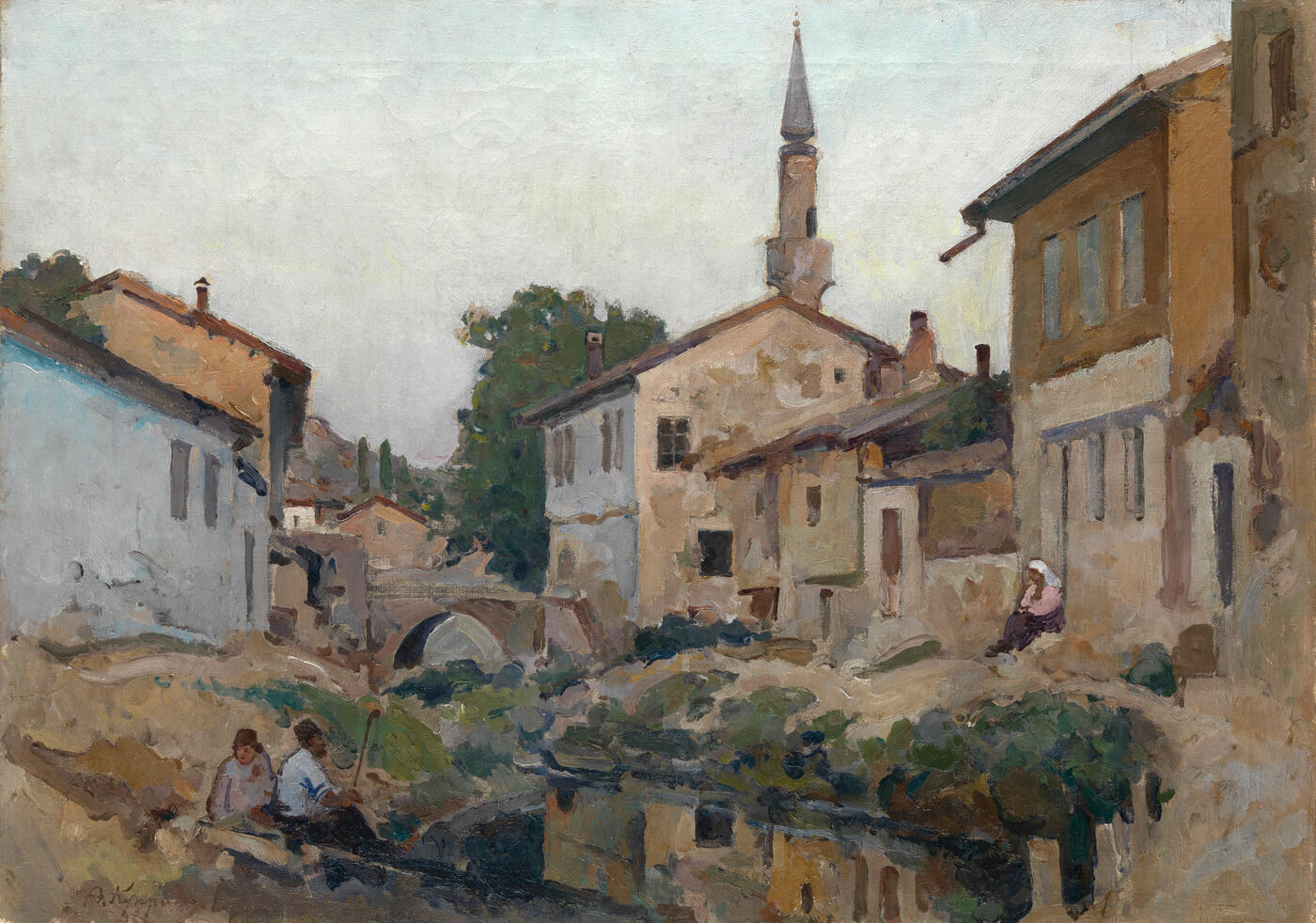4 June 2014 Russian Art Auctions
4 June 2014

* 4. KUPRIN, ALEXANDER (1880-1960)
Twilight Landscape. Churuk-Su River, Bakhchisarai, signed.
Oil on canvas, 89 by 125 cm.
150,000-200,000 GBP
Executed c. 1927–1928.
Provenance: Private collection, Turkey.
Authenticity of the work has been confirmed by the expert V. Petrov.
Exhibited:Vystavka kartin i skulptury obschestva moskovskikh khudozhnikov OMKh, Central Park of Culture and Leisure, Moscow, June 1929, No. 149.
Shestaya vystavka “Krym i Kavkaz–zdravnitsy Rossii”, Exhibition Hall of the Moscow Union of Artists, Moscow, 1931.
Khudozhniki RSFSR za XV let (1917–1932), State Historical Museum, Moscow, 1933, No. 412 or 414.
XIXa Esposizione Biennale Internazionale d’Arte, La Biennale di Venezia, Venice, 1934, No. 30 (label on the reverse).
Literature: Exhibition catalogue, Vystavka kartin i skulptury obschestva moskovskikh khudozhnikov OMKh, Moscow, 1929, p. 16, No. 149, listed as Semerechnyi [sic] peizazh.
Khudozhniki RSFSR za XV let (1917–1932) Zhivopis’, Moscow, Vsekokhudozhnik, 1933, p. 20, No. 412 or 414.
Exhibition catalogue, XIXa Esposizione Biennale Internazionale d’Arte, Venice, Carlo Ferrari, 1934, p. 320, No. 30, listed.
V. Nikolsky, Aleksandr Vasilievich Kuprin, Moscow, Vsekokhudozhnik, 1935, p. 43, illustrated; p. 104, listed under works from 1928.
Alexander Kuprin was a founding member of the Jack of Diamonds group at the start of the 20th century and one of the most prominent Soviet painters. He is represented here by this landmark canvas from his Crimean period, Twilight Landscape. Churuk-Su River, Bakhchisarai, which dates from late 1920s.
Kuprin was a graduate of the Moscow School of Painting, Sculpture and Architecture, a student of Konstantins Yuon and Korovin, and one of the most passionate adepts of French avant-garde experiments. The artist paid his first visit to the Crimea in 1907, whence he wrote in a letter to his wife, Anastasia Polozantseva, that there is sufficient material here to last an artist for not one, but several lifetimes.
However, it was not until the late 1920s, that Kuprin produced his best Crimean landscapes, characteristic for their inner harmony and expressive form. As the art critic Viktor Nikolsky wrote in his 1935 monograph on Kuprin, the artist made annual pilgrimages to Bakhchisarai from 1926 to 1930 and never tired of his artistic love-affair with this neglected corner of the Crimea.
Kuprin’s landscapes of the time are remarkable for their expressiveness and freedom of brushwork. They show to best effect the artist’s skill in conveying a sense of volume and the rhythm of architectural forms. But while formalist experiments had previously taken centre stage in Kuprin’s work, the Bakhchisarai landscapes of the late 1920s reveal a deeply lyrical approach to their subject. Here, as never before, we can see how Kuprin was bewitched by the carefree atmosphere of what Nikolsky called this lazy, sleepy southern town.
Twilight Landscape. Churuk-Su River. Bakhchisarai is the only work of Kuprin’s Bakhchisarai cycle to remain in private hands. The others have long been the pride of Russian museum collections: Bakhchisarai. Churuk-Su. Evening (1930) in the collection of the Tretyakov Gallery in Moscow, and Bakhchisarai. Churuk-Su.
Noon (1927) hangs in the Russian Museum in St Petersburg.
Notes on symbols:
* Indicates 5% Import Duty Charge applies.
Ω Indicates 20% Import Duty Charge applies.
§ Indicates Artist's Resale Right applies.
† Indicates Standard VAT scheme applies, and the rate of 20% VAT will be charged on both hammer price and premium.